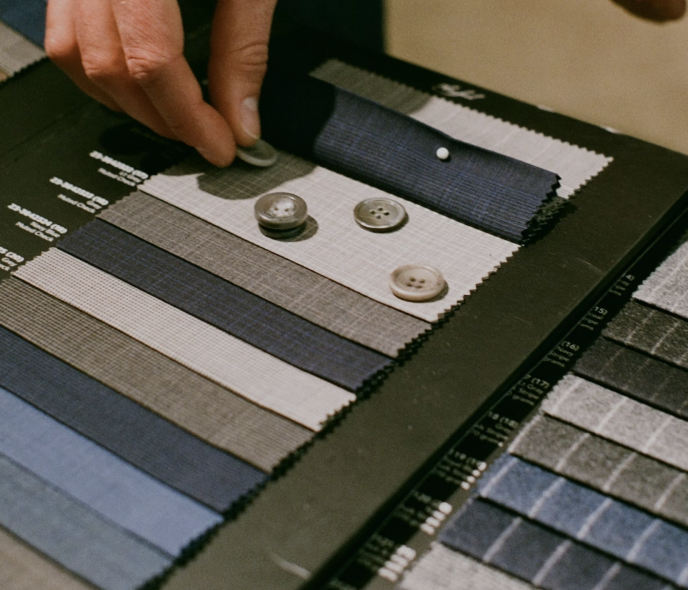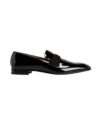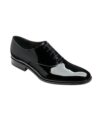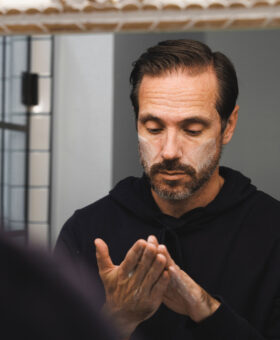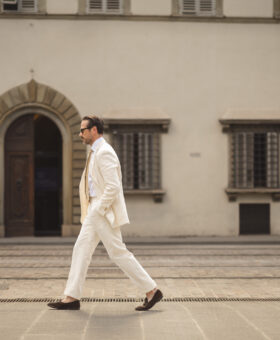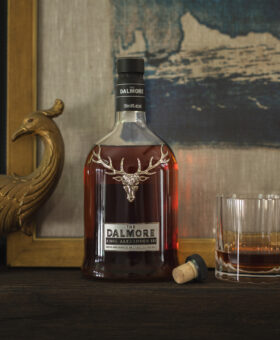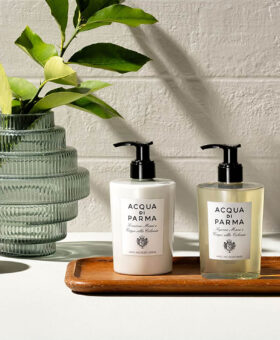8 Black Tie Rules To Always Follow
Share
Essentials of Dressing for Black Tie Events
When it comes to dressing appropriately for different occasions, there aren’t that many hard and fast rules out there. For the most part, any style rules are really just guidelines that can help inform the decisions you make. This means you can – usually – get away with bending the rules a little and bringing your own sense of style to the field.
But when it comes to black tie events like weddings, certain rules do need to be followed. After all, black tie is a very prescriptive dress code, so there’s not a ton of wiggle room.
If you want to dress your best for such a formal event, here are the eight black tie rules you should always follow.
8 Black Tie Rules To Follow
From matching your fabrics and picking out the right shoes to getting those finishing touches down pat, here’s everything you need to prepare for the big day.
Match your lapel and bow tie fabric
Always match the fabric of your lapel and bow tie. This will give you a cohesive, put-together look that will wow your guests – or the other attendees.
If you have a satin lapel, wear a satin bow tie. If you have a grosgrain lapel, wear a grosgrain bow tie. Mixing and matching these fabrics just doesn’t work.
Now, there are two exceptions to this rule. The first is if you have a self-facing lapel. That is a lapel that’s made in the same fabric as your tuxedo jacket. If the lapel is self-facing, you can choose whatever fabric you’d like. That said, satin bow ties generally look the best.
The other exception is if you have a velvet bow tie. In this case, you don’t need a velvet lapel to go with it. However, if you’re going for a classic, sophisticated look, leave the velvet bow tie at home.
No clip on bow ties
There are several reasons why you should never wear a clip on bow tie to a black tie event. For one, they look tacky and, in nearly every instance, cheap. For another, they look too perfect. The point of wearing a tie isn’t that it looks completely uniform or symmetrical.
Learning to tie your own bow tie is an incredibly valuable skill, especially if you plan to attend more formal events in the future. So, if you’re wearing a bow tie, take some time to learn to tie it yourself. It will look much more authentic and complete your tux the way it should.
Wear a waisting covering
No matter how big or small, the details and finishing touches of your ensemble matter. More than that, the details say a lot about a person, especially when it comes to the black tie dress code.
There are two main acceptable forms of waist covering: a vest and a cummerbund. These both cover your waist and provide a measure of cohesion to complete any black tie outfit.
If you choose to wear a cummerbund, choose one with the same type of fabric as the lapel. For example, if you have a satin lapel, wear a satin cummerbund. And if you’re wearing a grosgrain lapel, go with a grosgrain cummerbund. If you’re wearing a self-facing lapel, it’s up to personal preference, but satin almost always looks better.
Avoid regular suits
This one may seem obvious, but it’s worth pointing out. The only thing that really fits a black tie event is a tuxedo or, at the very least, a formal dinner jacket. Regular suits, no matter how snazzy they look, just won’t cut it.
Don’t be creative
There are times when it’s appropriate to bring out your favorite flashy accessory or brightly colored jacket. A black tie event is not one of them.
The entire black tie dress code is designed to ensure everyone in attendance looks uniform. No single person should call attention to themselves with the way they’re dressed.
However, that doesn’t mean you can’t stand out at all. The best way to look the part while still highlighting your own style is with the details.
In particular, pay attention to the fit of your garment. If you’re in a room full of tuxedos and yours is tailor-made to your exact proportions, you’ll stand out in the right way.
Some events, especially weddings, have a creative black tie dress code. For this type of event, you can add a little flair to your outfit, such as an accent piece or unique cufflinks. For traditional black tie, stick with what works.
Choose the right shirt
Not all shirts are created equal when it comes to black tie rules. Certain shirts work, while others don’t.
The most important details to follow are:
- Collar: For most black tie events, go with a turndown collar. If you want something more formal, a wing collar (which is usually reserved for white tie events) works well.
- Cuffs: Choose a French cuff as this is the most appropriate for the level of formality of these events.
- Front: The front of the shirt can be pleated, have a Marcella bib, or be plain. Whatever else, it should fit into the overall look well.
- Studs and cufflinks: Always have matching studs and cufflinks.
Wear the right shoes
For black tie, your shoes need to be simple, sleek, and black. Patent leather or plain leather Oxfords are the most classic options. But if you want something a little more elegant, go with patent or plain leather whole cut shoes instead.
In terms of loafers, you can wear either opera pumps or patent or plain leather Belgian shoes. For black tie optional, creative black tie, and cocktail attire dress codes, suede loafers or velvet slippers are acceptable.
Pay attention to details
As mentioned before, never overlook the details or finishing touches.
Your tuxedo pants should have a satin stripe down the side and a plain bottom hem. In very rare cases, a cuff on the trousers is acceptable. However, having cuffs tends to give the overall outfit a more casual aesthetic.
Next, the tuxedo jacket should have jetted pockets. It can be either single-breasted or double-breasted, depending on preference. It should also have peak lapels unless you’re going for a more relaxed look; in that case, go with shawl lapels instead. For less formal settings, or if you’re a wedding guest but not the groom, you can do a notch lapel.
Finally, the button facing should match the fabric of the lapel. And, while no vent is the most classic style, a double vent is more commonly recommended for modern black tie events.
Bottom Line
When it comes down to it, black tie dress rules are fairly straightforward. By following these rules, you’ll be prepared for any black tie event, whether it’s your own wedding or another special occasion.





